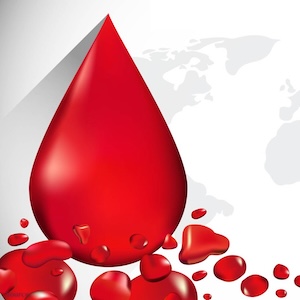Mini-reviews
Vol. 3 No. 2 (2024)
Role of platelet autophagy in cardiovascular diseases

Publisher's note
All claims expressed in this article are solely those of the authors and do not necessarily represent those of their affiliated organizations, or those of the publisher, the editors and the reviewers. Any product that may be evaluated in this article or claim that may be made by its manufacturer is not guaranteed or endorsed by the publisher.
All claims expressed in this article are solely those of the authors and do not necessarily represent those of their affiliated organizations, or those of the publisher, the editors and the reviewers. Any product that may be evaluated in this article or claim that may be made by its manufacturer is not guaranteed or endorsed by the publisher.
Received: 25 March 2024
Accepted: 7 August 2024
Accepted: 7 August 2024
1145
Views
269
Downloads
Similar Articles
- Roger Lijnen, Désiré Collen, The key to fibrinolysis and thrombolysis , Bleeding, Thrombosis and Vascular Biology: Vol. 4 No. 3 (2025)
- Giovanni de Gaetano, When a feminist platelet went to the convention of prostaglandins and thromboxanes , Bleeding, Thrombosis and Vascular Biology: Vol. 4 No. 3 (2025)
- PO26 | Non-canonical coagulation platelets function: monocyte-platelet interaction a bridge between inflammation and coagulation , Bleeding, Thrombosis and Vascular Biology: Vol. 4 No. s1 (2025)
- PO79 | Trying to hit the hit in the shadow of renal failure: a complex case managed with danaparoid , Bleeding, Thrombosis and Vascular Biology: Vol. 4 No. s1 (2025)
- PO91 | Disseminated intravascular coagulation with deep vein thrombosis in a frail patient: an extreme manifestation triggered by sepsis during SGLT2i therapy , Bleeding, Thrombosis and Vascular Biology: Vol. 4 No. s1 (2025)
- CO43 | Early platelet dysfunction in sepsis: an ICU pilot study , Bleeding, Thrombosis and Vascular Biology: Vol. 4 No. s1 (2025)
- PO58 | Gender differences in primary haemostasis , Bleeding, Thrombosis and Vascular Biology: Vol. 4 No. s1 (2025)
- Giovanni de Gaetano, Artificial intelligence, platelets and aspirin , Bleeding, Thrombosis and Vascular Biology: Vol. 3 No. 1 (2024)
- CO25 | Thromboinflammation and ros accumulation in individuals with high lipoprotein(a) levels , Bleeding, Thrombosis and Vascular Biology: Vol. 4 No. s1 (2025)
- Anna Falanga, Benjamin Brenner, Alok A. Khorana, Welcome to the 12th International Conference on Thrombosis and Hemostasis Issues in Cancer! , Bleeding, Thrombosis and Vascular Biology: Vol. 3 No. s1 (2024)
1-10 of 188
Next
You may also start an advanced similarity search for this article.










